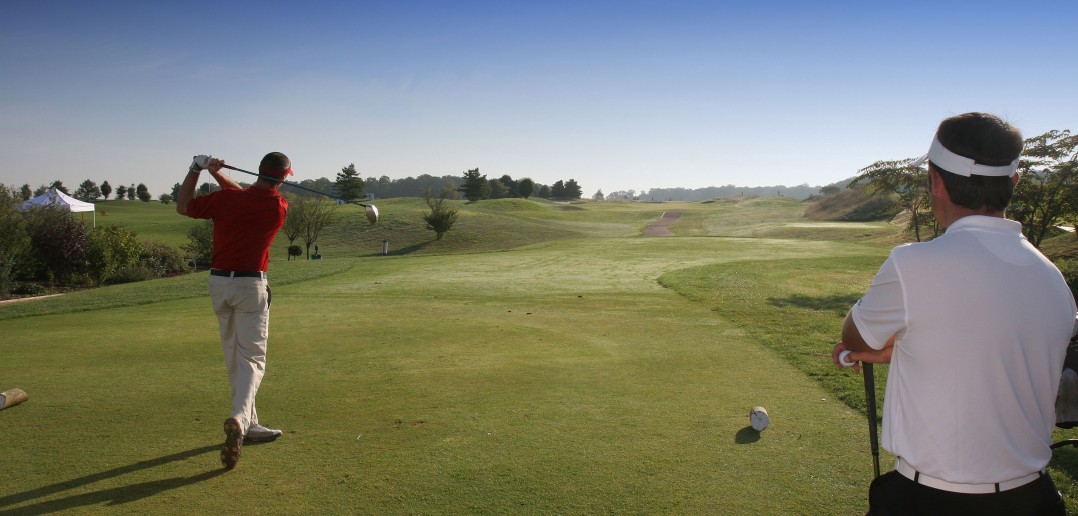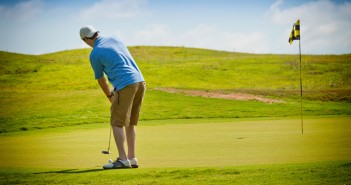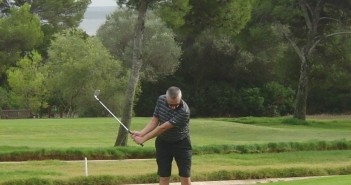Here it is, the big day. You’ve been preparing for this moment for weeks, your swing is in good shape, you’ve decided on your strategy for dismantling the golf course.
Perhaps it’s the club championship, and you’re in with a real chance of winning.
Or maybe it’s just your regular four ball, but there are people watching from the clubhouse balcony.
It could be that you were prone to a slice last week, and there’s trouble right. “Oh please, don’t let me mess this one up!”
Whatever the occasion, we all suffer from first tee nerves at some point, some of us so much that it can be crippling – in the worst cases golfers can end up dreading the first tee from the moment they wake up, so much so that they stop playing competitive golf, even give up the game all together, and they miss out on the many thrills this great game offers.
In Dealing With Pressure, we discussed some strategies for playing great golf under pressure, but the intensity of the first tee can be intimidating for even the most experienced and accomplished golfers.
So how can you cope, stick the ball in play, start the round well and enjoy your day?
Slow it Down!
The first thing you should do when you know you’re likely to be feeling the pressure on the first tee is to go slow.
Breath slowly and deeply. Stroll slowly onto the tee box. Talk slowly to your playing partners. Even try to think slower.
Your subconscious mind will respond to the added pressure by speeding up your heart rate, raising your blood pressure, and coursing adrenaline through your veins. All of this will cause you to breathe and act quicker than normal, it will tighten your muscles and reduce your ability to control your movements effectively.
All of this is out of your control, it’s a natural “fight or flight” response that is part of being alive. But by focussing on the things that you can control, like your breathing, your walking and your talking, you can counteract the negative physical effects of pressure and take back control of your own body.
You will probably feel like you’re moving at a snail’s pace, but in reality you’ll be moving normally.
You’ll be able to release the tension and make a more relaxed, fluid swing.
Point Focus
Consciously shift your focus, concentrating all of your attention onto the centre of your body – what martial artists call the Lower Dantian (China) or the Hara (Japan), which they consider to be the physical centre of gravity of the human body, the seat of one’s internal energy and the foundation of rooted standing, breathing, and body awareness. The Lower Dantian is about three finger widths below, and two finger widths behind, your navel.
By shifting your focus in this way you eliminate tension-creating distractions such as hazards, spectators, problems at work or at home, the behaviour of your playing partners, performance anxiety or swing mechanics.
This takes a little practice, and it’s well worth working on it on the range – feel distractions blurring and washing away as your attention is focussed. Also, during practice rounds, seek out conditions that would normally distract you or cause nervousness and work on the Point Focus technique, so that when it comes to the big occasion you can turn it on at will.
You should find that you are able to strike the ball better and more consistently using this technique, even in practice.
Pressure is part of golf. It’s an important part of the fun of golf, until it gets too much, then it’s not any fun at all!
Use these techniques and you’ll soon be better equipped to deal with the first tee jitters, or any high-pressure situation, and you’ll enjoy the big occasion, rising to it with your best golf.
Happy fairways!

» Think Like a Champion – Master Golf's Mental Game.




